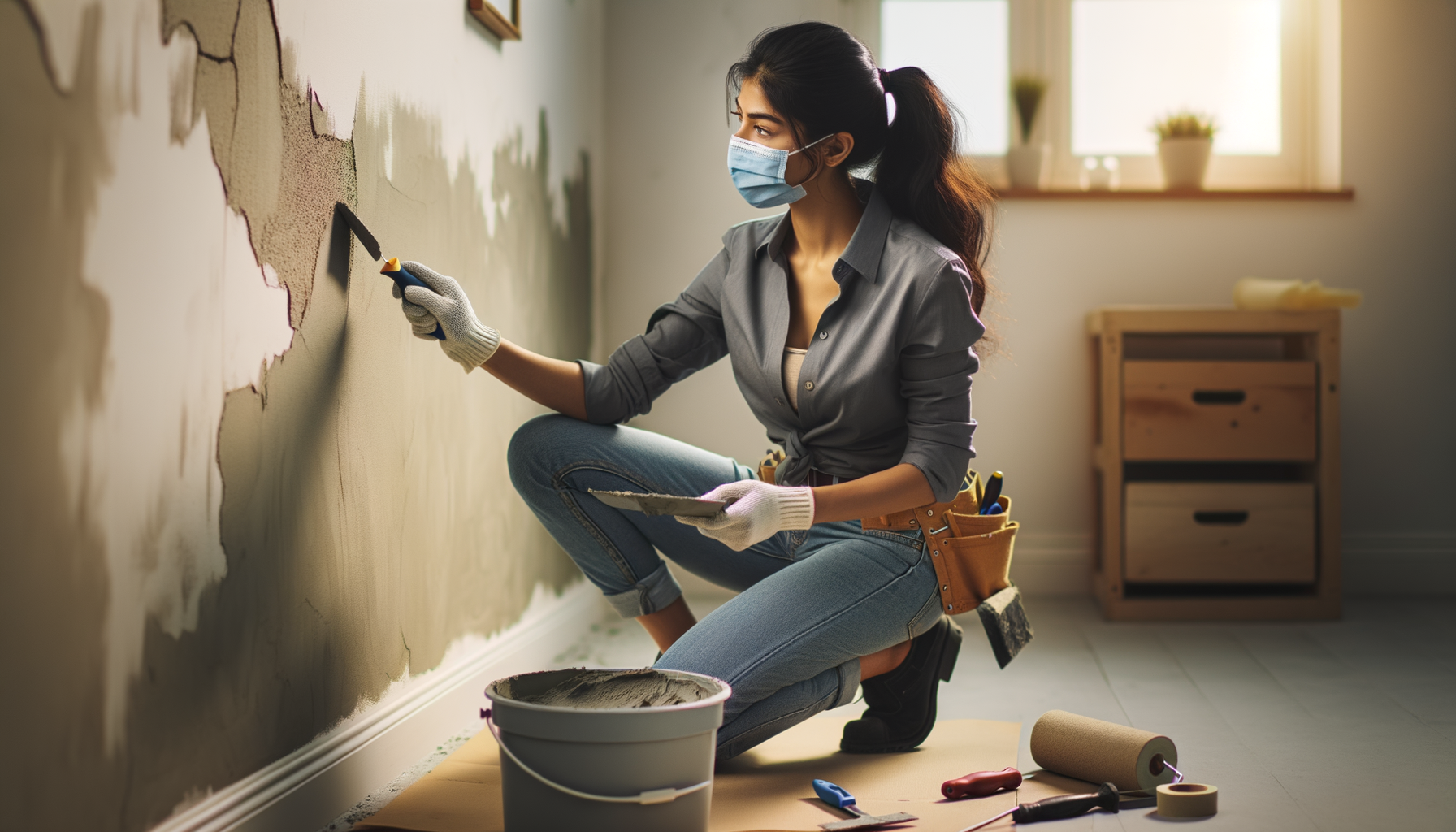What is Sheetrock?
Understanding Sheetrock
- Sheetrock Definition:
- Sheetrock is a popular brand name for drywall. Drywall is made from a material called gypsum that is sandwiched between thick sheets of paper.
- Why It’s Important:
- Sheetrock is used to make the walls and ceilings in our homes. It provides a nice, smooth surface that’s ready to paint or decorate.
Why Does Sheetrock Crack?
- Foundation Settling:
- Sometimes, as houses get older, they can settle or shift a bit. This can cause cracks in the sheetrock.
- Weather Changes:
- Different temperatures and moisture levels can make materials expand or shrink, leading to cracks.
- Bad Installation:
- If the sheetrock wasn’t put up correctly, it’s more likely to crack.
- Heavy Vibrations:
- Big machines or construction work nearby can shake your walls enough to cause cracks.
Checking the Damage
Types of Cracks
- Tiny Cracks:
- These are very small and thin, often from light settling or minor changes in the weather.
- Spiderweb Cracks:
- These cracks spread out from a central point and look like a spiderweb.
- Big Cracks:
- These are wider and longer. They can mean there’s a bigger structural problem.
How Bad Is It?
- Just Cosmetic or Something More?:
- Cosmetic cracks don’t affect the strength of the wall, but structural cracks can mean serious issues.
- Call a Professional:
- If the crack is big, growing fast, or there are other signs of damage, it’s time to call an expert.
What You Need to Fix Sheetrock Cracks
Tools
- Utility Knife:
- For cutting into the wall and cleaning out the crack.
- Sandpaper (Fine Grit):
- To make the repaired area smooth.
- Putty Knife:
- For applying the sheetrock compound.
Materials
- Sheetrock Compound (Joint Compound):
- This is used to fill the crack and make it smooth.
- Tape (Fiberglass or Paper):
- This helps keep the compounded area strong and prevents future cracks.
- Primer and Paint:
- To make the repair blend in with the rest of the wall.
- Safety Gear (Goggles, Dust Mask):
- Protects you from dust and debris.
How to Fix the Cracks
Getting Ready
- Clean the Area:
- Wipe down the cracked area with a damp cloth to remove dust.
- Remove Loose Pieces:
- Use the utility knife to get rid of any loose bits of drywall.
Filling the Crack
- Put on the Compound:
- Spread the compound over the crack with a putty knife.
- Add the Tape:
- Press the tape over the compound to make it stick well.
Making It Smooth
- Add More Compound:
- After the first layer dries, add more if needed, and sand each layer to make it smooth.
- Final Sand:
- Use fine grit sandpaper to smooth out any rough spots.
Finishing Up
- Prime the Area:
- Apply primer so the paint sticks well.
- Repaint the Wall:
- Use the same paint color to blend the repaired area with the rest of the wall.
Stopping Future Cracks
Regular Checks
- Control Humidity:
- Use devices to keep the humidity levels steady.
- Inspect the Foundation:
- Regularly check your home’s foundation for any issues.
Doing It Right
- Proper Installation:
- Make sure new drywall is installed correctly.
- Quality Materials:
- Use good-quality drywall, tape, and joint compound to avoid future problems.
When to Call a Pro
Small Cracks vs. Big Problems
- Need an Expert?:
- If the crack is large, growing fast, or appears along with other problems, call a professional.
Picking the Right Help
- Check Credentials:
- Make sure the contractor is certified and licensed.
- Read Reviews and Compare:
- Look at reviews and get quotes from multiple contractors to find the best one.
Extra Tips and FAQs
Common Questions
- "Can I Use Spackle?":
- Spackle is good for small repairs, but joint compound works better for larger cracks.
- "How Long Does It Take?":
- Depending on the crack size and drying times, it can take a few hours up to a couple of days.
- "What If the Crack Comes Back?":
- Check for deeper problems. If it keeps cracking, call a professional.
Handy Tips
- Ventilation:
- Work in a well-ventilated area to avoid inhaling dust.
- Practice First:
- Try fixing a scrap piece of drywall to get the hang of it.
- Keep Tools Clean:
- Clean your tools often to avoid mess and ensure a smooth finish.
By following these steps, you can fix your sheetrock cracks and keep your walls looking great!


Leave a Reply